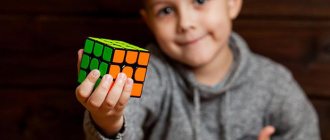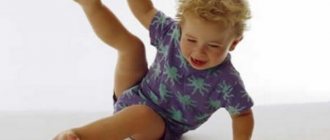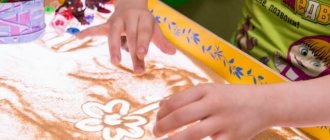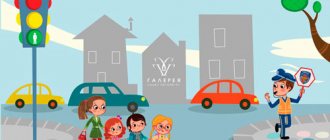Summary of a lesson for middle-aged children on cognitive development, topic “person.” body parts"
The author is a teacher at MKDOU No. 6, the city of Segezha, r. Karelia
Tatiana Chibirnova
Goal: to develop children’s understanding of the parts of the human body.
Tasks:
- learn to name and find certain parts of the body;
— clarify the idea of what a person’s eyes, ears, arms, legs, etc. are for;
- activate children’s speech, expand their vocabulary on this topic;
— cultivate a respectful and caring attitude towards one’s own body;
— develop the cognitive activity of preschool children.
Equipment: Presentation (attached, poster “Man”, phonendoscope, counting sticks.
Materials for correctional classes on the topic “Parts of the body”
Topic: Man. Body parts.
Dates______________________________________________
Goal: Creating conditions for a child to become familiar with the parts of the human body.
Tasks
-Educational: forming an idea of the human body, finding and showing body parts on yourself, on a doll and in an image.
- Correctional and developmental: development of voluntary visual and auditory attention, thinking, fine motor skills and coordination of movements.
-Educational: formation of a positive attitude towards participation in the lesson, cooperation skills.
Equipment: doll, pictures of a person and body parts.
Progress of the lesson
1.Organizational moment
: greeting the child, establishing emotional contact with him.
2.Main stage
2.1 Updating knowledge. Introduction to the topic of the lesson.
2.1.1 Didactic game
“Look and show.”
Goal: to form an idea of the parts of your body, to imitate the actions of an adult.
Progress of the game: An adult sits opposite the child and says: “Look ... (child’s name), here are my hands,” shows his hands to the child, then says: “Where are ... (child’s name) hands?”, takes the child’s hands and helps him examine his hands, says: “Here they are,” asks: “Give me your hands,” and stretches out his hands to the child.
Finger gymnastics
“Fingers”.
“This finger wants to sleep. This finger jumps into bed. This finger took a nap. This finger has already fallen asleep. Hush your finger, don’t make noise, don’t wake up your brothers... The fingers stood up. Hooray! Now it's time to play." (The fingers are open, all fingers are bent one by one, starting with the thumb. The fingers are tightly clenched into a fist, then they are vigorously unclenched).
2.2 Work on the topic of the lesson.
2.2.1 Game to develop auditory attention
“Show it to the doll and to yourself.”
Goal: developing an understanding of body parts, the ability to show body parts on a doll, listen and follow simple instructions.
Progress of the game: An adult shows a doll to a child and says: “Look... (child’s name), what a beautiful doll came to visit you. Look what kind of hands she has (shows the doll’s hands), show me where the doll’s hands are?” If the child cannot show his hands on the doll himself, an adult helps him do this (1. Hand in hand; 2. By the hand; 3. By the elbow).
The study of other parts of the body is organized in a similar way.
For reinforcement, you can also show previously studied parts of the face on the doll.
2.2.2 Didactic game
"Mirror (body parts)."
Purpose: examination of body parts, development of coordination of movements.
Progress of the game: An adult sits opposite the child and says: “Look, here are my hands, and where are your hands?”, The child shows his hands. The adult says: “Repeat after me” and performs simple movements and actions with his hands that are accessible to the child, and the child repeats after the adult.
You can also use this game to reinforce the studied parts of the body.
2.2.3 Didactic game
“Find the same.”
Goal: expanding ideas about the human body, developing attention, thinking, memory.
How to play: A picture of a person is placed on the table in front of the child. An adult asks: “Who is this?”, asks to show the studied parts of the body: “Show me, where are the hands? / legs? and etc." Then, the adult shows one card with a picture of the studied parts of the body, and the child says what this part of the body is called and shows it in a picture with a person.
Physical education minute
The wind blows in our faces (we pretend to blow the wind)
The tree swayed (we sway from side to side with our arms raised up)
The breeze is getting quieter, the tree is getting higher (we stretch our hands up).
2.2.4 Practical work
1. Modeling “Eyes”. The child rolls balls from plasticine and sticks them onto a “Face” cardboard blank with drawn parts of the face.
Similar work can be done when studying other parts of the face.
2. Application “Funny face”. Gluing details (eyes, lips, nose, ears) onto the finished cardboard form.
3. Final stage
3.1 Summing up the lesson.
3.2 Farewell
Coloring pages
Black and white coloring pages help kids understand what different organs look like, where they are located, and in what quantity. There are several options for teaching aids and pictures for children from one to 7 years old about parts of the human body:
- Applique and decoration
Parents help the baby glue the hair from threads and choose the color of the eyes.
- With signatures on body parts
A preschooler learns to read, colors and names the main organs.
- Connect the body parts and clothes with a line
The baby uses a pen or pencil to draw lines between the head and the hat, the mittens and the palm, the ring and the finger.
- Color and draw.
The pictures for children are unfinished; not all parts of the body are on the person’s face and torso. The child needs to understand which organ is missing, complete the image and color the card completely.
The topic “Parts of the body: interesting pictures for children” can become a favorite among preschoolers if teachers teach new things in a fun and interesting way. Fill your kindergarten classes with riddles and creativity, return to what you have learned in lessons related to the topic, for example, explaining clothing, the change of seasons, animals, birds, then the material about the human body will be firmly assimilated.
Progress of the lesson
Slide 1
Organizing time
Children stand in a circle
Adult: Guys, I’m very glad to see you all, and I want to give you my smile (I name the name of any child)
— I smiled at Marina, who is Marina?
Children: Marina – girl
Adult: How else can you say, who is Marina?
Children: Marina is a child.
Adult: That's right. And we can also say that Marina is a person.
One is a person, but many?
Children: People.
Adult: There are a lot of people living around us. We are all very different, but we all have a body. We have a head (children show, we have a neck (they show, we have a torso (they show), we have arms (they show, we have legs (they show).
We are all very different, but the structure of my body is similar to the structure of Marina’s body, and Marina’s body structure is similar to Vanya, etc.
- Guys, I suggest you look at the human body.
Children sit on chairs.
Main part
Slide No. 2
Adult: Let's look at a person's head.
Children name what they see on the slide (hair, ears, face - eyes, cheeks, eyebrows, nose, mouth)
Didactic game “Body Parts”
Didactic game “Number. Sign. Subject" on the lexical topic "Parts of the body"
The game is intended for children aged 4-6 years with severe speech impairments, as well as for children of preschool and primary school age to develop the lexical and grammatical structure of speech.
Didactic game “Number. Sign. Subject" can be used both in individual and subgroup lessons with children.
Target:
This set of games will help an adult teach a child:
- agree nouns with numerals and adjectives in gender, number, case;
- select qualitative, relative, possessive adjectives for nouns;
- use ordinal numbers in speech, coordinate them with nouns and adjectives in gender, number, case;
- activate mental activity, associative thinking;
- make comparative sentences with the conjunction “a”.
Material for the game:
cards with game tasks in two subjects of the same lexical group; playing field and cut cards for independent selection and compilation of a plot series; sets of numbers.
Game description:
Game with ready-made models : each table contains tasks for two subjects of the same lexical group for a larger educational load. At the beginning of the game, the child needs to be clearly shown how associations can be used to indicate the characteristics of objects. For example, how can you depict a bitter taste, show the hardness, softness, juiciness of vegetables, color and shape.
Below are ready-made game cards:
- two small baby noses;
- five small oval ears;
- three kind blue eyes;
- six large oval mouths;
- two small children's hands;
- two slender female legs;
- five long female fingers;
- two oval male heads;
- one curved black female eyebrow;
- three long female necks.
The game requires compliance with the following steps:
- Name a word denoting a number (what number? - two).
- Name the word denoting the object (what is it? - spout).
- Agree the noun with the numeral in gender (how many spouts? - two spouts).
- Name the words denoting the attribute of an object, coordinate them with numerals and nouns in gender, number (two noses (which ones?) - small, children's).
- Agree the numeral with the adjectives and nouns in gender and number. (Say in a complete sentence, starting with a number. – Two little baby noses.)
- Using the same principle, consider another subject of the lexical group - the ear.
- Make comparative sentences with the conjunction “a”. (There is one nose, five ears, etc.)
Game with cut cards : played on the same principle as with ready-made models. Only here the child takes an active position and is given more independence.
First, you should invite the child to choose an item on a lexical topic and place it in a sector with an asterisk, then a number (place in the first sector) and select adjectives in the form of picture symbols (place in the longest sector of the playing field). The symbol pictures are first reviewed and what they mean is explained.
To better understand the progress of the game with cut cards, a sample is provided below.
Using the didactic game “Number. Sign. Subject" children will quickly master the skills of agreeing adjectives, nouns and numerals in gender, number, case; will learn to select adjectives for nouns and develop their associative thinking.
The development of associative thinking has a positive effect on the process of memorizing and reproducing necessary information.
On our website you can find other educational games from the “Number” series. Sign. Item". To do this, follow the highlighted link .
We wish everyone success.





